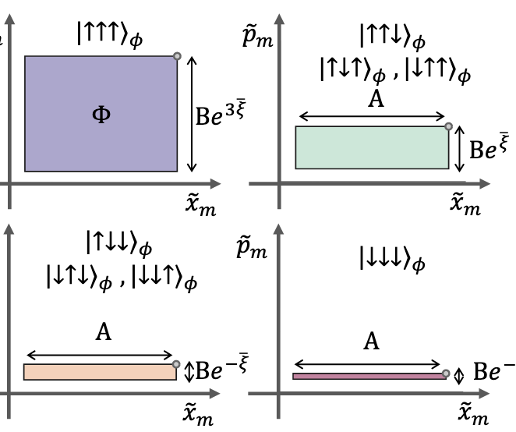QSA scientists developed a novel protocol for the single-step generation of N-body entangling interactions between trapped ion qubits. This capability supports more efficient execution of quantum algorithms, which have better performance in the face of decoherence and other errors.
The Science: Most quantum computing technologies, including trapped ions, realize entangling operations between two qubits at a time. While arbitrary entanglement over N qubits can be achieved by stringing together multiple two-qubit entangling operations, considerable efficiencies could be realized by performing an N-qubit entangling operation in a single shot. QSA researchers have identified a way to do this by exploiting a unique feature of some trapped-ion systems, where N ions are stored in a single trap and have shared motional modes. Their scheme preserves the benefit of motional insensitivity that standard two-qubit Molmer-Sorensen gates provide.

The Impact: Current algorithms are often limited by errors associated with qubit decoherence and gate infidelity due to errors in control pulses. Longer and more complex algorithms could, therefore, be supported if the algorithms could be compiled into shorter and more efficient gate sequences. QSA researchers developed a new protocol for trapped ion quantum computers that replaces many two-qubit entangling gates with fewer N-qubit entangling gates.
Summary: QSA scientists have developed an N-body entangling interaction for trapped ion quantum computers that represents a new degree of freedom in controlling their quantum states, and may significantly expand the expression of trapped ion quantum logic operations. It could also lead to much more efficient quantum algorithm implementations than those relying on two-qubit entangling gates.
Contact: Christopher Monroe – c.monroe@duke.edu
Citation: Katz, O. et al., N-Body Interactions between Trapped Ion Qubits via Spin-Dependent Squeezing. Phys. Rev. Lett. 129, 063603 (2022)
Funding Acknowledgement: This work is supported by the ARO through the IARPA LogiQ program; the NSF STAQ program; the DOE QSA program; the AFOSR MURIs on Dissipation Engineering in Open Quantum Systems, Quantum Measurement/Verification, and Quantum Interactive Protocols; and the
ARO MURI on Modular Quantum Circuits; the U.S. Department of Energy HEP QuantISED Program through the GeoFlow Grant No. de-sc0019380.